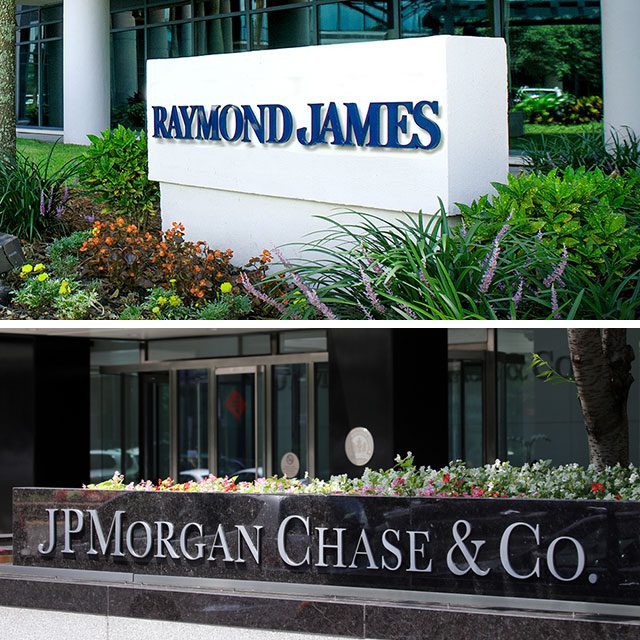Raymond James to Use J.P. Morgan's 55ip Tax-Smart Portfolio Tool

What You Need to Know
The broker-dealer is the first third-party user of the technology, which is part of JPMorgan’s asset management group.
Raymond James has picked J.P. Morgan Asset Management’s 55ip technology to enhance its managed account platform with integrated tax management capabilities.
The arrangement is “an industry-first partnership” that should help Raymond James’ advisors make regular changes — like rebalancing and tax-loss harvesting — to clients’ managed accounts, leaders of the two firms say.
The 55ip software, acquired in 2020 when J.P. Morgan bought the technology firm, is expected to be fully deployed by Raymond James by mid-2024.
Overall, the deal underscores two trends in wealth management: first, the growing demand for tax management capabilities and, second, the expanding need for industry players to work with third parties rather than build new tools alone, invest in a complete overhaul or take other highly disruptive and expensive steps, according to executives from the two firms.
“Our partnership with Raymond James is an example of how leading asset management and wealth management firms can partner beyond investment products by providing value-added technology,” George Gatch, CEO of J.P. Morgan Asset Management, told ThinkAdvisor in an interview.
Plus, embracing integration can help firms avoid the so-called “rip and replace” cost that — in the past — “was involved with adopting a solution like this,” said 55ip CEO Paul Gamble. “So, a big part of our business model is to be able to integrate our services directly into where the enterprise and advisors are already doing business today.”
To that end, 55ip has built what Gable calls a “very intuitive, advisor-led experience” that includes automated trade generation and execution, for instance, so advisors can do real-time customization and tax management “at scale but without having to take up more and more of their time.”
According to Gatch and Gable, there’s an emerging consensus that building tech tools from scratch — in order to deliver added value to clients — results in higher costs and lower performance relative to what can be accomplished via partnerships and service integrations.




